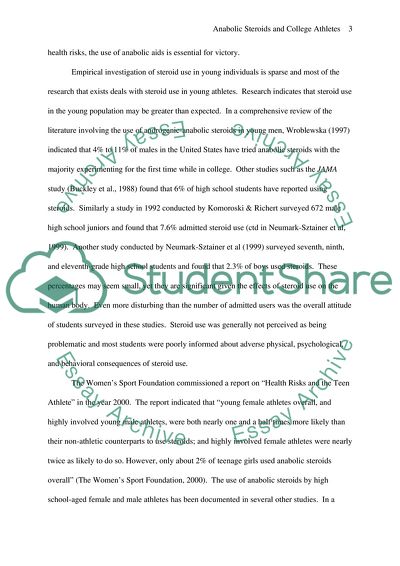Cite this document
(Anabolic Steroids and College Athletes Research Paper, n.d.)
Anabolic Steroids and College Athletes Research Paper. https://studentshare.org/health-sciences-medicine/1736751-should-collegehigh-school-athletes-be-tested-for-anabolic-steroids-and-would-it-be-an-effective-deterrent
Anabolic Steroids and College Athletes Research Paper. https://studentshare.org/health-sciences-medicine/1736751-should-collegehigh-school-athletes-be-tested-for-anabolic-steroids-and-would-it-be-an-effective-deterrent
(Anabolic Steroids and College Athletes Research Paper)
Anabolic Steroids and College Athletes Research Paper. https://studentshare.org/health-sciences-medicine/1736751-should-collegehigh-school-athletes-be-tested-for-anabolic-steroids-and-would-it-be-an-effective-deterrent.
Anabolic Steroids and College Athletes Research Paper. https://studentshare.org/health-sciences-medicine/1736751-should-collegehigh-school-athletes-be-tested-for-anabolic-steroids-and-would-it-be-an-effective-deterrent.
“Anabolic Steroids and College Athletes Research Paper”. https://studentshare.org/health-sciences-medicine/1736751-should-collegehigh-school-athletes-be-tested-for-anabolic-steroids-and-would-it-be-an-effective-deterrent.


